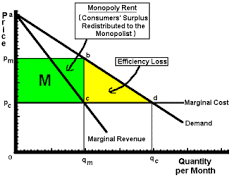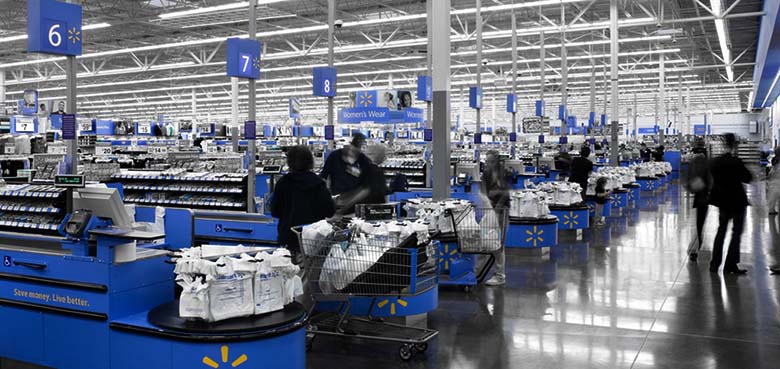Intermediation, or letting other businesses get in the way of customers, can build a brand but put it in a poor strategic position.
Executive Summary | Abstract | TL;DR
A middleman or intermediary is an individual or company with a business interest in staying between one company and its customer.
Good intermediaries can provide access to customers that a company would not otherwise have the opportunity to serve. Bad intermediaries can use their position as rent-seeking, adding no value to the process. Types of supply chain intermediaries include wholesalers, retailers, agents, dealerships, and white Label Buyers. Types of communication intermediaries include attention brokers, directories, influencers, ad networks, marketing agencies, and hosts.
Companies dependent on any one channel are in a poor strategic position. Their business might be damaged or destroyed by a sudden loss of access to their customer, negotiating from a position of weakness and not have the feedback from customers to improve their offering. Use middleman, but try to distribute your business over many of them and develop direct to customer channels in parallel.
6 minute read | 1500 words.
A middleman or an intermediary is someone with a business interest in taking a product, service or message from another business and delivering it to a customer.
At best, these businesses add value by developing distribution networks to customers the company would not have access to. For example, a retailer takes mass qualities of products, divides them up, sends them to stores, and places them with other products so that customers can come and fulfill all their needs in one shop. This is something a manufacturer could never do directly because a store of only one type of product may not attract any customers.

At worst, middlemen act as rent-seeking. Rent-seeking is an economics term referring to players who increase their share of the wealth without increasing value. Rent-seeking is corrosive to the economy because they take resources away from value-adding players, increase financial friction, reducing government income, and rising wealth inequality.
A new kind of brand is emerging that have a direct relationship with their customers. Brands like Dollar Shave Club, Casper, and 4Ocean communicate, sell and ship directly to their customer. The one to one nature of the relationships between these companies and their customers deepens the connection to the brand, increases brand equity, and gives them a competitive advantage.
Examples of Middlemen / Intermediaries
Below is a list of middlemen or intermediaries.
Please note, I am not casting any judgment towards the value these companies add to the supply chain or communication chain. It is just crucial that business owners and executives appreciate that these are companies between you and your customer. It is just reality.
Supply Chain Intermediaries
Merchant Wholesalers
Companies that purchase large quantities of product to sell them in
smaller quantities to a network of customers.
- Labatt Food Services
- Cardinal Health
- Ingram Content Group
Retailers
Companies that attract customers by selling a variety of products.
- Walmart
- Amazon
- Costco
Agents or Brokers
People or companies that customers trust more than themselves to get the best
price or value from a product. Agents never take ownership of the product.
- ReMax (real estate broker)
- Aon (insurance broker)
- eBay
Franchisees or Dealerships
or Brokers
Businesses that are committed to a specific brand but deal with the operations
and relations of selling products.
- McDonald’s franchisee
- Chevrolet dealership
- Edward Jones agent
White Label Buyers
Brands that purchase a product and sell it under their own brand.
- Great Value
- Amazon Essentials
- Kirkland
Communication Intermediaries
Attention Brokers
Places that have the attention of people and will place messages in their
content for a fee. Includes media companies and social media sites.
- Kim Kardashian
- New York Times
Directories
Places people turn to when they do not know where to find a product or
solution.
- Google (Search and Maps)
- YellowPages
- AutoTrader
Influencers
Individuals or companies that customers trust to evaluate products and make
recommendations.
- MKBHD
- Kylie Jenner
- Consumer Reports
Ad Networks, Brokers or
Marketing Agencies
A company that distributes a message to many attention brokers.
- Google AdWorks
- Omnicom
- BBDO
Hosts
A company that carries and distributes your message on their servers or
location.
- YouTube
- MailChimp
- WordPress.com
Middlemen aren’t a problem, but being overly reliant on any single one is.
People that help you distribute your messages or products to an audience that you would not otherwise have access to is an essential part of doing business. There is nothing wrong with that.
What is a problem is when a business has a significant portion of sales dependant on any one player.
Being in a weak strategic position means that you are vulnerable changes in the future, and a business that can have a significant portion of their revenue go away at any given time is in a dangerous position. A large company in this position is actually worse off than a small company because they have more substantial operating and capital expenses that may make a sudden loss of business harder to recover from (eg. a large office with a $100,000+ lease).
Jeff Bezos just became the wealthiest man on modern history. Amazon has some of its own products, but mostly sells other people’s products. Beyond retailing products, their Amazon Marketplace is a service where they give access to Amazon’s customers and infrastructure for an even more significant portion of the selling price. Some companies only sell on Amazon or have 95% of their sales through this channel.
Companies dependent on any one channel may get knocked out by either:
- A sudden loss of access to their customer
- Negotiate from a position of weakness
- Not have the feedback from customers to improve their offering
Issue 1 | Sudden Loss of Access to the Customer
Having another business in between you and your customers puts you in a strategically vulnerable position. If that business decides not to distribute your message or product, your business may not be able to weather the sudden loss in revenue.
You might be thinking: “Nah, that cannot happen to my business; my partners value my product, and I have great relationships with them.” But you would be surprised how quickly these relationships can change.
Entertain these examples:
- A retailer can give away your shelf space to a competing product that has a higher profit margin.
- A bill or a charge you dispute could put a “stop services” order on your account.
- A search engine can decide that another piece of content is a better answer to a search query than yours.
- Your top affiliate could start pushing a different service because of a better commission percentage offered by a competitor.
- A publication you consistently advertise with because they attention of your market could go out of business.
- Your gorgeous influencer / spokes model could drop you because of an allegation of animal testing from a fringe blog.
- Your top salesperson could leave and take their contact list with them.
- A regional distributor could declare bankruptcy.
Real world example:

This can happen to the best of us. Mahalo was a human-curated search engine started by legendary entrepreneur and now angel investor Jason Calacanis after WebLogsInc. Mahalo received the vast majority of traffic from Google searches; they provided searchers the top resources for a topic. Jason had developed a relationship with the Google search spokesperson believing Google and Mahalo were partners exchanging value.
Mahalo’s traffic got wiped out overnight in the Google search algorithm update called Panda. The update was designed to penalize content farms with poor quality content such as eHow, WikiHow and WebMD.
“Matt Cutts killing the business really pissed me off,” Jason told ProductHut, “he just smiled and told me ‘you don’t have a penalty’ with a shit-eating grin.”
Jason was forced to use that rage, and pivot his business into Inside.com and the Twist Podcast Network. Inside distributes vertical specific news through email and text message specifically because there is no intermediary.
Issue 2 | Weak Bargaining Power
Being overly reliant on one channel puts you in a poor bargaining position with that channel and all other channels. A dependency on a channel can force you into a bad deal, slowly eroding your profit margins.
Alternatively, if your sales and communications is distributed, or you have direct access to your customers, than you can fight for better deals knowing that this business partner is not indispensable for your business.
Real world example:
I worked for a decade marketing in the retail industry for clients that were overly dependant on a single retailer: Walmart. Some companies would do anything Walmart asked at any cost because almost all their business went through the retailer. They would give sweetheart deals on loss or stolen merchandise, give six-month payment terms, and pay for the refurbishments entire sections of the store. Many sellers to Walmart looked at the store as a channel to build brand awareness, not make money.

Issue 3 | Lack of customer feedback.
The most damaging thing a business misses out on when there is another business in between them and their customers is feedback.
The ability to solicit customer feedback and make timely adjustments is the difference between brands and hall of fame brands, so the middlemen in your business may be keeping you from excellence. Assuming you are not white-labeling, you can use your packaging to encourage customers to give you feedback.
Real world example:

Apple had an issue with the keyboard in it’s MacBook Pro that was introduced in mid 2015. The new “butterfly” keyboard design had a tendency to be rendered useless by crumbs or dust (iFixit on YouTube).
Apple had direct to customer communication channels set up: the Apple Store, The Genius Bar, and Apple Care. They were able to see the more than expected service requests regarding for the keyboard.
They reacted to the feedback. Apple offered to wave the replacement cost of keyboards (WIRED) in June of 2018, and winked and nodded that the keyboard design had changed in their press release for the new MacBook Pro, and was confirmed during iFixit’s teardown (YouTube).

Conclusion: Use middlemen but be smart about it.
If a person comes to you with an opportunity to sell more product through them, I am not recommending to turn them down. If the business opportunity is profitable, then you must increase revenue for your stakeholders. I understand this, and have experienced it myself.
My recommendation is that you try to develop channels that are direct to your customers, and spread your opportunities over many middlemen so that you are not reliant on any one of them. This will put you in a better bargaining position, give you feedback from your end customers, and make sure your business is there for the long haul.
Brands like Apple, Casper, Dollar Shave Club (now Gilette) and 4Ocean are getting success by valuing direct to customer channels. Because of these direct connections, they have higher brand equity and market cap.

Leave a Reply